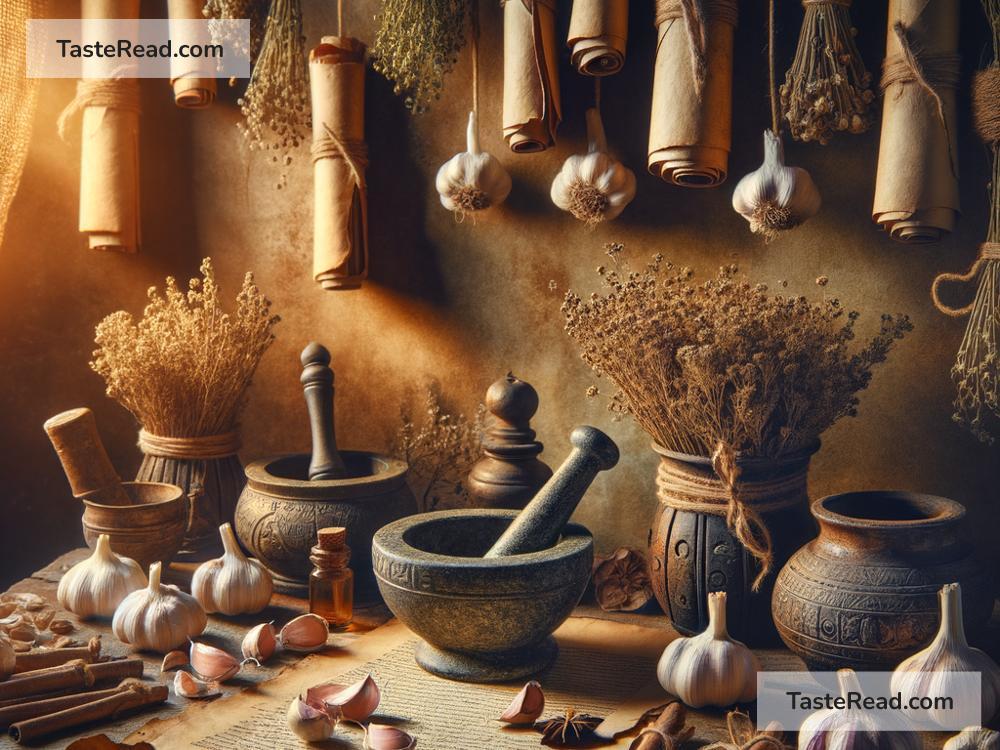The Fascinating History of Garlic in Ancient Medicine
Garlic is a humble, simple ingredient that we often use to add flavor to our food. But did you know that garlic has been prized for thousands of years not just as a cooking ingredient, but also as a powerful medicine? Ancient civilizations believed garlic had amazing healing properties, and it played an important role in their healthcare practices. Let’s explore the story behind garlic in ancient medicine and why it was so highly valued.
Garlic’s Origins in Ancient History
Garlic is one of the oldest cultivated plants in human history. Its roots trace back over 5,000 years to the regions of Central Asia—places like Siberia and Mongolia. From there, garlic spread to the ancient civilizations of Egypt, Mesopotamia, India, and China, becoming a vital part of their diets and health practices.
What makes garlic so special is its unique chemical composition. When garlic is crushed or chewed, it releases a compound called allicin, which has powerful antibacterial, antiviral, and antifungal properties. While ancient people didn’t understand chemistry like we do today, they could quickly see that garlic worked wonders for healing, prevention, and strengthening the body.
Garlic in Ancient Egypt
One of the earliest records of garlic being used as medicine comes from ancient Egypt. Egyptian priests, doctors, and even builders all used garlic for its health benefits. In fact, garlic was so highly prized that it was sometimes used as currency.
The laborers who built the pyramids were given garlic as part of their daily rations because it was believed to give strength and stamina. Garlic was also used to ward off infections and treat wounds. Ancient Egyptian medical texts like the Ebers Papyrus, written around 1550 BCE, describe garlic as a cure for heart problems, tumors, and intestinal parasites.
Even after death, garlic held symbolic importance. Some Egyptians placed garlic bulbs in the tombs of pharaohs, believing it would protect and guide them in the afterlife.
Garlic’s Role in Ancient Greece and Rome
Garlic spread to ancient Greece and Rome, where it became another key ingredient in medicine. In ancient Greece, the famous physician Hippocrates, often called the “Father of Medicine,” recommended garlic for a wide range of health issues. He believed garlic could help patients with respiratory illnesses, digestive problems, and even fatigue. He called it a “healing herb.”
Athletes in the ancient Olympic Games would eat garlic to boost their performance and energy. It was believed that garlic could increase physical strength and endurance—an idea supported by its widespread use among soldiers before battles.
In Roman culture, garlic was equally respected. Roman physicians prescribed garlic for infections, digestive issues, and joint pain. Roman soldiers, like their Greek predecessors, consumed garlic before going to war, believing it could make them braver and stronger. Garlic also played an important role in protecting people from diseases—Romans often used garlands of garlic as a household charm to ward off sickness.
Garlic in Ancient India and China
In India and China, garlic was seen not only as a medicinal cure but as a spiritual protector. Traditional Indian medicine, known as Ayurveda, praised garlic for its ability to balance the body’s energy and treat health issues like joint pain, coughs, and skin conditions. Some Ayurvedic doctors combined garlic with honey or sesame oil to create healing remedies.
The ancient Chinese also embraced garlic as a cure for illnesses. Garlic was used to boost immunity and treat gastrointestinal infections. In traditional Chinese medicine (TCM), garlic is still considered a warming food that helps improve blood circulation and detoxify the body.
Garlic in Medieval Europe and Beyond
As civilizations expanded, garlic remained a staple in medicine. During the Middle Ages, Europeans used garlic to fight off the plague, which was one of the deadliest pandemics in history. People believed garlic could protect them from “bad air” or evil spirits, which were thought to cause diseases. People wore garlic around their necks or hung it in their homes to keep illness away.
Garlic also played a role in folk remedies and superstition. Many medieval societies believed garlic could ward off vampires and other supernatural creatures. While there was no scientific basis for this belief, it showed how much garlic was connected with protection.
The Science Behind Garlic’s Healing Powers
Modern science has confirmed that garlic does have real health benefits. Allicin, the active compound in garlic, has been shown to kill harmful bacteria and strengthen the immune system. Garlic may also reduce blood pressure, lower cholesterol, and fight inflammation. It’s no wonder ancient doctors thought of garlic as a miracle cure!
Conclusion
Garlic has been an essential part of human health for thousands of years. From ancient Egypt to medieval Europe, garlic was used to treat illnesses, boost strength, and even protect against evil. Though medicine has advanced greatly since those times, garlic’s healing properties are still valued today. Whether we use it as a home remedy, include it in our meals, or take it in supplements, garlic connects us to the wisdom and traditions of our ancestors.
Next time you add garlic to your food, remember the fascinating history behind this simple bulb. It’s more than just a flavorful spice—it’s a gift of health passed down through the centuries.


